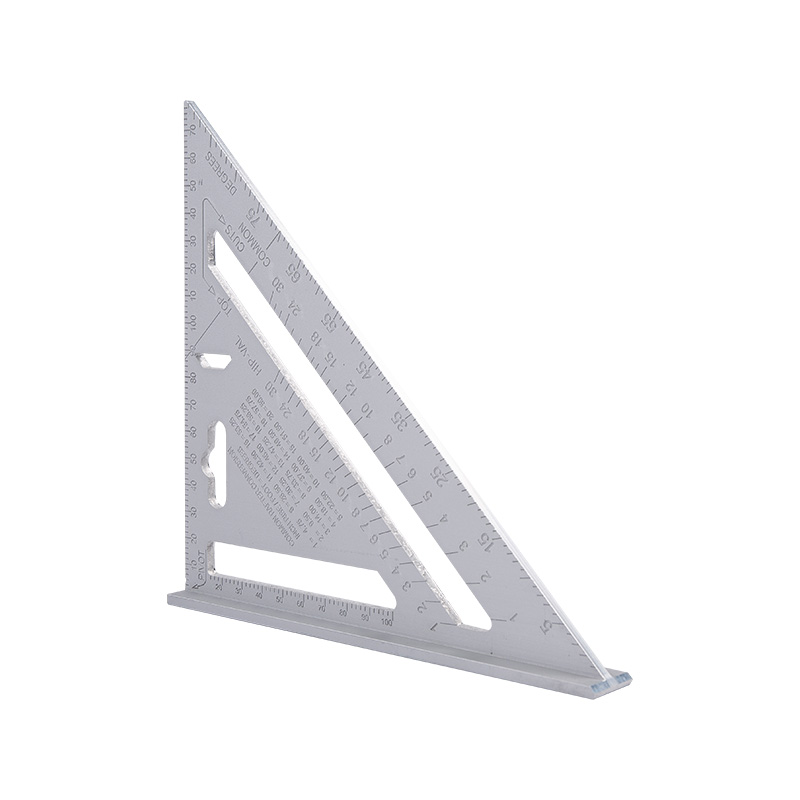Here are some advanced techniques and tips for using a rafter square to enhance efficiency and precision in measurements:
Compound Angles: Achieve mastery in measuring and marking compound angles by combining the intricate markings on the rafter square. This advanced skill becomes indispensable for intricate roof structures or woodworking projects where angles intersect in complex arrangements. Precision in these scenarios is crucial to ensure a seamless fit.
Scribing Curves: Exploit the precision of the scribing notch on the rafter square to meticulously mark and cut curves in various materials such as wood or metal. This technique demands a deft hand and an acute eye, allowing you to introduce elegant curves that add a level of sophistication and craftsmanship to your creations.
Extendable Arms: Harness the extended arms of an adjustable rafter square for expansive layout tasks. This is not just about extending reach; it's about enhancing stability during measurements. In large-scale projects, where accuracy can easily be compromised, the extended arms of the rafter square become a crucial asset.
Roof Pitch Calculation: Dive into advanced methods for determining roof pitch using the rafter square. This skill is indispensable when dealing with irregular roof designs. Expertise in calculating pitch ensures that your cuts align perfectly with the unique geometry of the roof, a critical factor in structural integrity and overall aesthetics.
Miter Cuts: Unleash the full potential of the rafter square in marking and executing precise miter joints. This skill is a mark of a seasoned craftsman, essential for creating seamless connections between pieces in woodworking or carpentry projects. The rafter square becomes a tool of finesse in your hands.
Dovetail Layouts: Elevate your craftsmanship by using the rafter square to lay out dovetail joints with utmost precision. This technique is a hallmark of fine woodworking, demanding not only accuracy in measurements but also an understanding of how each joint contributes to the overall strength and beauty of the finished piece.
Hidden Birdsmouth Cuts: Employ the rafter square to master hidden birdsmouth cuts for rafters. This technique goes beyond mere functionality; it's about blending structural integrity with aesthetic finesse. The concealed notches created by the rafter square showcase a commitment to detail and craftsmanship that distinguishes your work.
Scaling Measurements: Skillfully utilize the markings on the rafter square to scale measurements with surgical precision. In projects where the slightest deviation can lead to cascading errors, the ability to accurately transfer scaled dimensions from plans to materials elevates your work to a level of meticulous professionalism.
Parallel Lines: Execute the art of marking parallel lines with the rafter square, not as a mere convenience but as a strategic time-saving tactic. This skill ensures consistent spacing and alignment, transforming the rafter square into a tool that doesn't just measure but actively contributes to the efficiency of your workflow.
Diagonal Layouts: Master the nuanced art of laying out diagonals with the rafter square. This goes beyond basic geometry; it's about precision in creating diagonal elements that contribute both functionally and aesthetically to your projects. A mark of a seasoned professional lies in the ability to seamlessly incorporate diagonals into complex designs.
1. Extruded aluminum with natural color
2. Punched graduations
3. Conversion tables for common application needs

 [email protected] / [email protected]
[email protected] / [email protected]
 +86-571-81993095
+86-571-81993095

